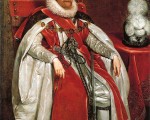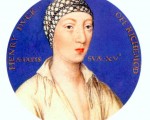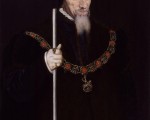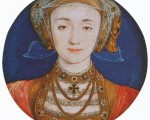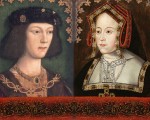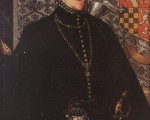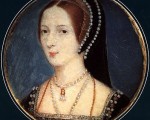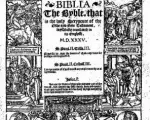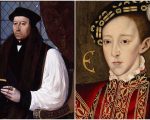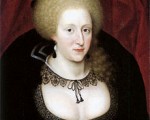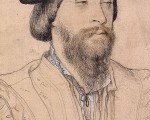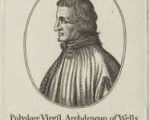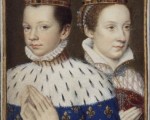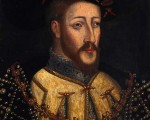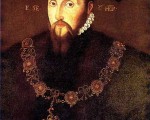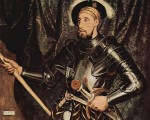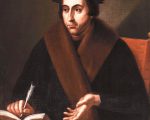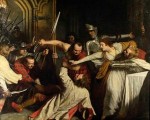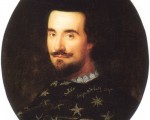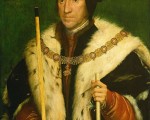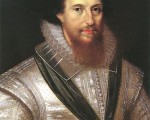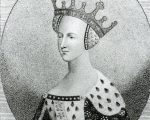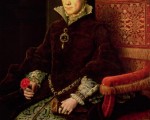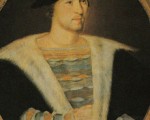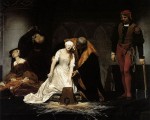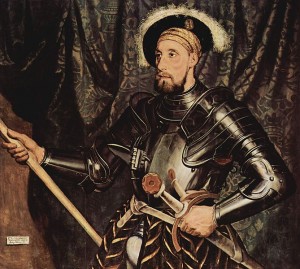
Nicholas Carew
The fourth article in Sarah Bryson's series on prominent Tudor courtiers...
In today's article, I will be exploring the life of Nicholas Carew, Master of the Horse and close friend of King Henry VIII. Carew's life was one of prosperity moving from one advantageous position to another until suddenly and unexpectedly his king turned upon him. Carew would prove that not even being a close friend to the king could save you from the executioner's block.
While the exact date of Nicholas Carew’s birth is unknown, it is believed that he was born by 1496 to Sir Richard Carew of Beddington. There is no information regarding Carew’s childhood, however, during his teenage years, he made his first appearance at court, and in May 1511 he was made a groom of the privy chamber. In 1513 he was associated with his father in a grant from the crown for the office of Lieutenant of Calais Castle. After the death of his father, Carew surrendered the association with Lieutenant of Calais yet continued to receive an annuity from Calais of around £100. Despite protests from other courtiers, this annuity continued until 1524 when Carew was granted lands of equal value.
In the autumn of 1513, Henry VIII decided to invade France with an army of 30, 000 men, which included Carew. The English army took the city of Therouanne in Artois without a great deal of difficulty and then went on to besiege Tournai. Nicholas’s father led the artillery at Tournai and for his efforts at Therouanne Nicholas received “a coat of rivet” from the king.
The following year, Carew married Elizabeth, daughter of Sir Thomas Bryan of Ashridge, vice-chamberlain to Queen Katherine of Aragon. The couple were granted the lands of Wallington, Carshalton, Beddington, Woodmansterne, Woodcote, and Mitcham, in Surrey upon their marriage. Nicholas and Elizabeth had one son, Francis, and four daughters, Elizabeth, Mary, Anne, and Isabel.
By 1515, Nicholas was recorded as being a squire to Henry VIII and one of the king’s cupbearers, being granted 30 marks per year. Sometime between 1515 and 7th July 1517, Nicholas was knighted. On the 7th of July 1517, Nicholas was recorded as a knight who attended the ambassadors of the future Charles V, at a banquet. On 18th December, Carew was also recorded as a knight when he was appointed keeper of the manor of Pleasaunce in East Greenwich, and of the accompanying park. In addition to being knighted, in 1518 Carew had the distinction of being appointed a gentleman of the privy chamber.
Nicholas Carew appears to have been a close friend of Henry VIII, both men similar in age, strong and athletic. They also shared common interests including a love of hunting and jousting. Carew was frequently mentioned in the lists of men participating in jousting events during Henry VIII’s early reign. One such example was on 17th July 1517 when Carew distinguished himself in the jousts in which Henry VIII also participated. After the jousts, Carew entered the lists, and three men carried out a lance nine inches in diameter and twelve feet long! Carew carried the huge lance three-quarters of the way down the lists to the amazement of the crowd!
Sometime between 1514 and 1518, Carew was banished from court. The reason and exact length of the banishment are unknown. By 1519, he had returned. However, in that same year, Carew and a number of men were banished from court partially due to their familiarity and influence upon the king and also in an attempt to save funds. Carew’s punishment was to be appointed as Lieutenant of Rysbank Tower, the tower that guarded the entrance to Calais harbour. Carew’s banishment was short; within six months he was back at court attending festivities. On 19th October 1520, Carew relinquished his post at Calais and in return was granted a pension of £100. A month later he gave up the annuity of 30 marks as the king’s cupbearer.
By 1518-1519, Carew had been appointed as sheriff of Surrey and Sussex. He also attended the Field of Cloth of Gold in June 1520, where Henry VIII met with the French king, Francis I, and participated in the jousting events for the English. Following the Field of the Cloth of Gold, Carew travelled with Henry VIII to Gravelines to meet Charles V.
Carew’s prospects continued to rise when in 1521 he was granted the offices of Constable of Wallingford Castle and Steward of the honour of Wallingford and St. Walric, and land at Chiltern. In Christmas 1521 Carew had the high honour of being appointed as the king’s carver. On 18th July 1522, Carew was appointed as Master of the Horse, one of the three highest positions at court. He was also granted the manor of Brasted in Kent, which had formally belonged to the Duke of Buckingham, and the manor of Bletchingley in Surrey.
Carew also proved to be a capable ambassador to Henry VIII. In late 1520, Carew was sent to Francis I to deliver papers and to persuade the French king not to invade Italy. Although the mission was not completely successful, Carew was granted £100 for his services. In 1527, Carew, Lord Lisle, Dr Taylor, Anthony Browne and Thomas Wriothesley were ordered to bestow the Order of the Garter on Francis I. In the same year, Carew's lands were assessed at around £400, a sizeable sum for the time.
In 1529, Carew continued his ambassadorial duties when he, Dr Sampson and Dr Bennet were sent to Bologna to ratify the Treaty of Cambrai with Charles V. Carew was also tasked with seeking Charles V’s thoughts on Henry VIII’s “Great Matter”, that is the annulment of Henry VIII’s marriage to Katherine of Aragon in order to marry Anne Boleyn. When Carew left Bologna on 8th February 1530, he was given a gold chain worth 2000 ducats by Charles V.
In 1532, Carew returned to France to meet with Francis I and to organise a meeting between Henry VIII and Francis. Carew was reported as wishing he did not have to go. However, he was a dutiful servant and followed his king’s wishes. It is highly likely that Carew spoke with Francis I regarding his thoughts on Henry VIII’s “Great Matter” and the king’s possible marriage to Anne Boleyn.
Francis I appeared to have highly favoured Carew as in 1533 and in 1534 he wrote to Henry VIII to ask him to bestow the Order of the Garter, the highest order of chivalry in England, on Carew. As no current positions were available in the order, Henry VIII promised to do so at the next available opening. In April 1536, it was commonly believed that George Boleyn, brother of Anne Boleyn, now second wife to Henry VIII, would receive the appointment to the Order of the Garter. However, on St. George’s day (23rd April) Sir Nicholas Carew was appointed. While a huge honour to Carew, such an appointment was a major blow to the Boleyns.
Carew was no friend of the Boleyns. When Henry VIII’s fool spoke favourably of Queen Katherine of Aragon, Henry VIII was outraged and banished his fool from court for a time. The fool sought refuge with Carew. Carew also aligned himself with Thomas Cromwell and spoke unfavourably of Anne Boleyn to the King. It is believed that Carew was one of the men coaching Jane Seymour on how to behave with the king, even providing Jane lodgings at his house at Beddington so that the king could visit her regularly.
Carew was installed into the Order of the Garter on 21st May 1537, at the order’s feast. He also attended the christening of Henry VIII’s longed-for son and heir, Edward, in October 1537. However, in November 1538, the strings would start to unravel that would lead to Carew’s arrest and his execution.
In November, Henry Pole, Baron Montague, and Henry Courtney, Marquis of Exeter, were arrested and taken to the Tower of London. They were charged with treason for corresponding with Cardinal Reginal Pole, Montague’s brother and an enemy of Henry VIII, and for wishing to see a change in the kingdom. Early the following year, Carew was arrested and then tried on 14th February 1539. At his trial, Carew was accused of corresponding with Montague and hiding Montague’s traitorous plans, as well as wishing for a change in the realm. The letters that passed between Carew and Montague were allegedly burned, and the evidence against Carew was flimsy at best. He was still sentenced to death.
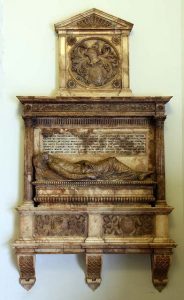
Memorial to Nicholas Carew at St Botolph's.
Sir Nicholas Carew was beheaded on Tower Hill on 8th March 1539. Upon the scaffold it is reported that Carew “made a goodly confession, both of his folly and superstitious faith, giving God most hearty thanks that ever he came in the prison of the Tower, where he first savoured the life and sweetness of God’s most holy word, meaning the Bible in English.” (Bayley p. 377).
Carew was buried in St Botolph without Aldgate. When his wife, Elizabeth, died in 1546, her remains were buried with Nicholas. On their deaths, the remains of their daughter Mary and Mary’s husband Sir Arthur Darcy were added to the tomb. As a traitor, Carew’s property and lands reverted to the crown, but an act of Parliament in 1554 granted Carew’s son, Francis, his father’s former property and lands.
Sir Nicholas Carew was a loyal servant and friend of King Henry VIII. He served his king both at court and as an ambassador overseas, as well as participating in court festivities. He shared a love of jousting and hunting with the king and manoeuvred the ever-changing social order of the king’s court. Despite his close friendship with Henry VIII, Carew’s end came swiftly and suddenly, showing that even being a friend of Henry VIII could not save you from the executioner's block.
Sarah's other "The King's Men" articles:
Sources
- Bayley, J.W. (1825) The history and antiquities of the Tower of London: with memoirs of royal and distinguished persons, deduced from records, state-papers, and manuscripts, and from other original and authentic sources, T. Cadell, London.
- Doran, Susan (2008) The Tudor Chronicles, Quercus Publishing, London.
- Jokinen, Anniina 2010, Sir Nicholas Carew, Luminarium Encyclopaedia Project, viewed 10 February 2017, http://www.luminarium.org/encyclopedia/carew.htm.
- Lehmberg, S (2007) Carew, Sir Nicholas (b. in or before 1496, d. 1539), Oxford Dictionary of National Biography, Oxford University Press, viewed 18 February, http://www.oxforddnb.com/view/article/4633.
- Richardson, Douglas (2011) Plantagenet Ancestry: A Study In Colonial And Medieval Families, 2nd Edition, CreateSpace, USA.
- Ridgway, Claire (2014) "23 April 1536 – Nicholas Carew, George Boleyn and the Order of the Garter", The Anne Boleyn Files, viewed 10 February 2017, http://www.theanneboleynfiles.com/23-april-1536-nicholas-carew-george-boleyn-order-garter/.
